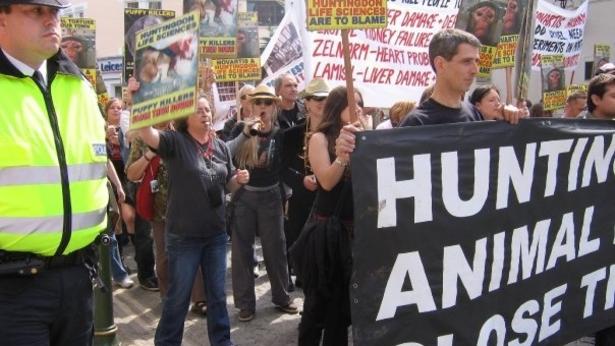SHAC calls an end to 15 year campaign of extremism
Tue, 19 August 2014
Category: Media: conferences and press
 Stop Huntingdon Animal Cruelty (SHAC) has officially called an end to its 15 year campaign against Huntingdon Life Sciences (HLS). The campaign, which targeted HLS, its stakeholders and its stakeholders’ stakeholders, resulted in dozens of convictions, most recently Debbie Vincent in March 2014. SHAC had been active in the UK, US and continental Europe. Many of SHAC’s leaders were involved in illegal activities from 1999 to 2006. In 2009, seven activists including Greg and Natasha Avery, and Heather Nicholson, were sentenced to between four and eleven years in jail. The following year, five more SHAC activists were given significant jail sentences for a campaign of “violence and terror” against companies linked to HLS. Many of these sentences were, like Debbie Vincent, for Conspiracy to Blackmail.
Stop Huntingdon Animal Cruelty (SHAC) has officially called an end to its 15 year campaign against Huntingdon Life Sciences (HLS). The campaign, which targeted HLS, its stakeholders and its stakeholders’ stakeholders, resulted in dozens of convictions, most recently Debbie Vincent in March 2014. SHAC had been active in the UK, US and continental Europe. Many of SHAC’s leaders were involved in illegal activities from 1999 to 2006. In 2009, seven activists including Greg and Natasha Avery, and Heather Nicholson, were sentenced to between four and eleven years in jail. The following year, five more SHAC activists were given significant jail sentences for a campaign of “violence and terror” against companies linked to HLS. Many of these sentences were, like Debbie Vincent, for Conspiracy to Blackmail.
John Cook, a journalist, described SHAC’s tactics thus: “SHAC’s modus operandi is simple, elegant and shockingly effective: Publish the names, home addresses and telephone numbers of executives and employees of Huntingdon and any companies it does business with; identify these individuals as ‘targets’”
The SHAC campaign was at times indiscriminate – targeting people with no links to HLS or animal testing. According to The Guardian newspaper in 2005: “An incendiary device was placed under a car belonging to a truck driver and his wife in Leicestershire last week. The firebomb, which did not go off, was intended to target a solicitor who worked for the pharmaceutical giant Fisons. The lawyer had moved from the property 18 months earlier. In another case, the finance director of a small brokers firm, Canaccord Capital, was in hiding yesterday after being firebombed by the ALF at his home in Bracknell, Berkshire. Michael Kendall, his wife and two young daughters were asleep when the incendiary device exploded under his car, which was in the garage.”
SHAC have tried to claim success as their campaign draws to a close, writing: “Right now HLS is over $100 million in debt, is struggling to win or keep customers, has steadily decreasing year end profits and is at serious risk of bankruptcy. The only reason they’ve survived this long is because of the UK Government […] [which] stepped in and saved the laboratory from closure with a multi-million pound loan.”
However, the purported facts do not appear to ring true. HLS recently acquired Harlan “to create a business that will turnover half a billion pounds in annual revenue” – not the actions of a business on the edge of bankruptcy. HLS has repeatedly denied any funding support from the UK Government (indeed the Government would not be allowed to provide such loans).
While many will welcome the news that SHAC has closed shop, others remain sceptical. SHAC has had injunctions slapped on it from at least 18 companies and organisations including HLS itself, Novartis, Oxford University and AstraZeneca. By closing SHAC, activists may believe they would be unrestricted by those injunctions which name SHAC.
Several SHAC members, including Sven van Hasselt and Natasha Simpkins, detained in the Netherlands in 2012, are still awaiting extradition to the UK to stand trial for Conspiracy to Blackmail.
Wendy Jarrett, CEO of Understanding Animal Research said; “It is a testament to the bravery and resilience of a lot of people that SHAC never achieved its aim of closing Huntingdon Life Sciences, despite some horrific crimes against HLS staff and suppliers. We know that the British public is generally very supportive of the use of animals in medical research and I am glad that HLS has persevered in carrying out legally-required animal research, such as that mandated in the development of potential new human and veterinary medicines.“
